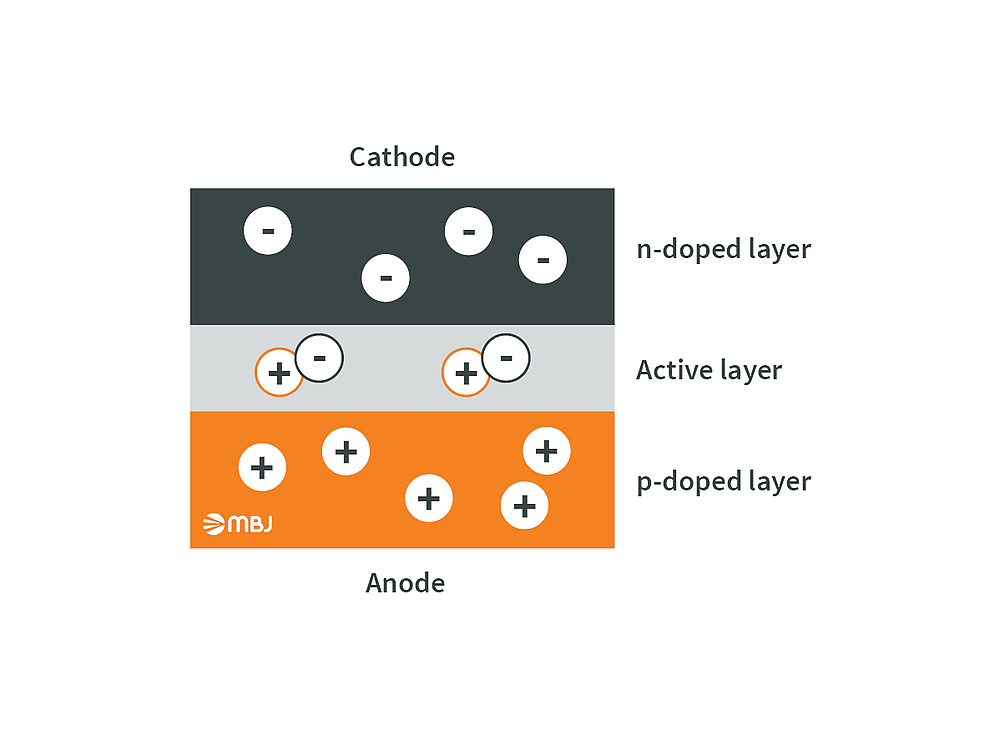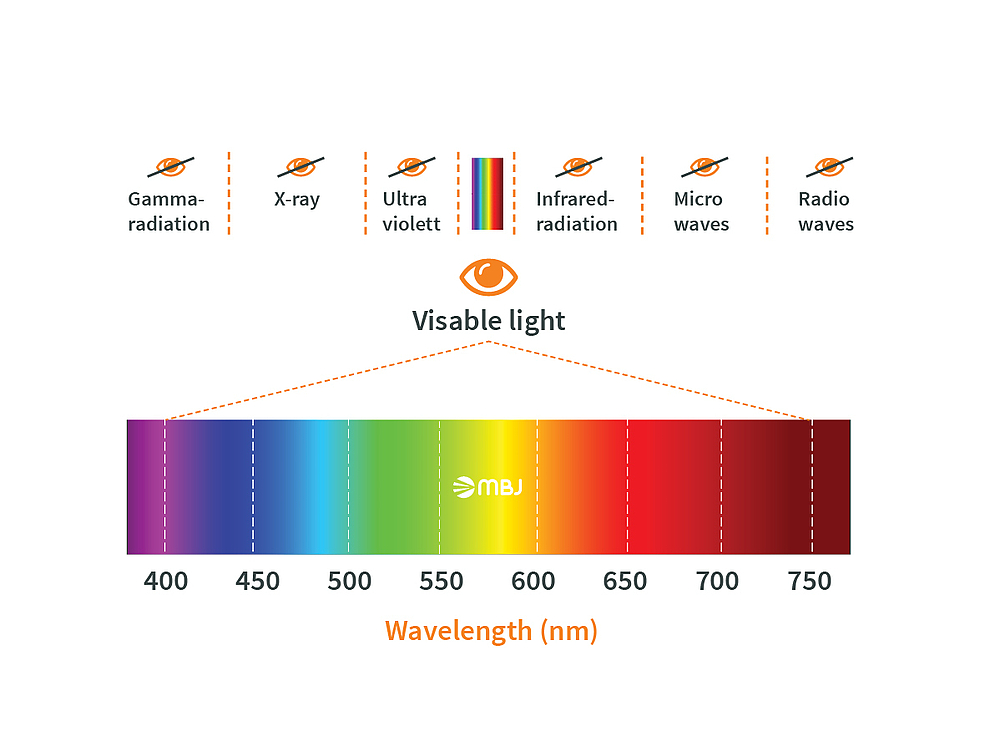
LED Color
For the human eye a spectrum of approx. 400-780nm wavelength is visible. Sunlight contains all these wavelengths and others that are no longer visible to the human eye. At wavelengths shorter than 400nm, the spectrum is referred to as the ultraviolet range; at longer wavelengths, above 780nm, the spectrum passes into the infrared range.
In contrast to sunlight, the light emitted by the light-emitting diode is almost monochromatic (single-color) and thus offers only a very narrow subrange of the entire spectrum at any given time. Depending on the LED, this lies in a very specific wavelength range.
This must be taken into account when selecting the illumination for a specific application, since different light colors have very different effects in the object and in the camera image.
Selection of the correct wavelength/ LED color
The image can be strongly influenced by the selection of an illumination color. Certain colored elements can be emphasized, others moved into the background. This works via the principle of reflection or absorption of colored light on colored surfaces. If the color of the light is similar to the color of the object, the light is reflected: objects appear bright in a monochrome image. If the color of the light and the object are on opposite sides of the color scheme, the light is absorbed: Objects appear dark. In this way, contrasts can be deliberately enhanced.
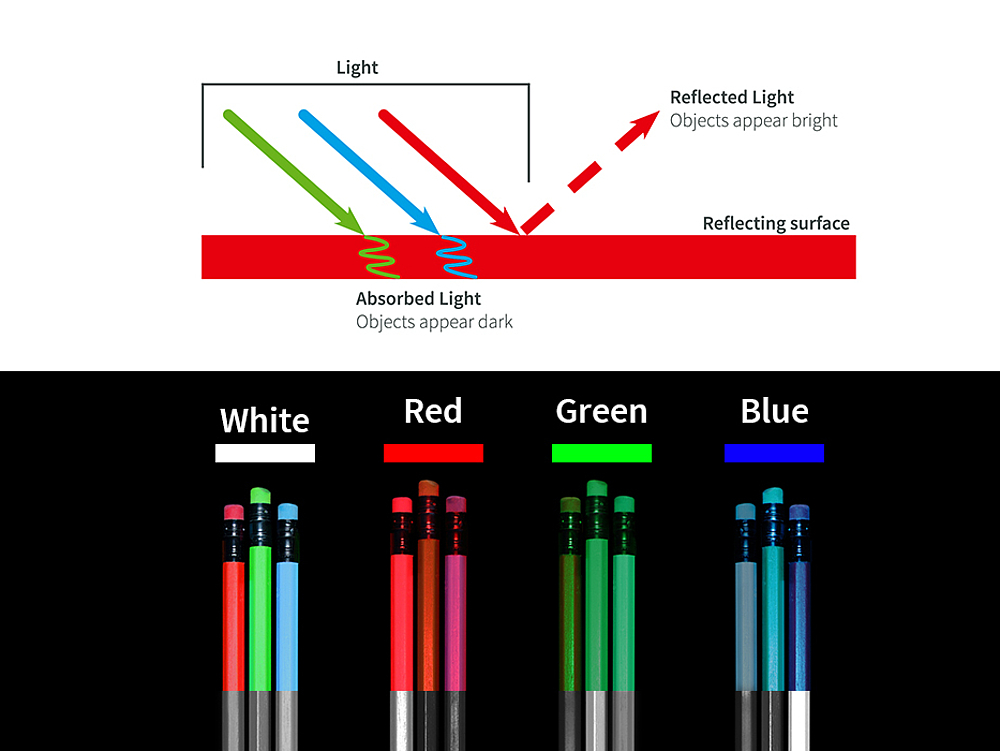
White LED Light
White light consists of a superposition of all wavelengths of the visible spectrum. It is created by additive color mixing. However, since LEDs emit light only in a very narrow spectral range, an additional technical step must be used for white LED light.
A photoluminescent layer is applied over an LED, usually a blue LED. This layer is excited by the blue LED light and itself shines in a much broader spectral range; it acts as a wavelength converter and thus generates the white light in combination with the blue LED.
Depending on the material of the luminescent layer, different white color temperatures (specified in degrees Kelvin) can be generated. White LEDs at MBJ produce light with a color temperature of 5000K. On request, we also offer daylight quality lighting with a CRI value of 99.
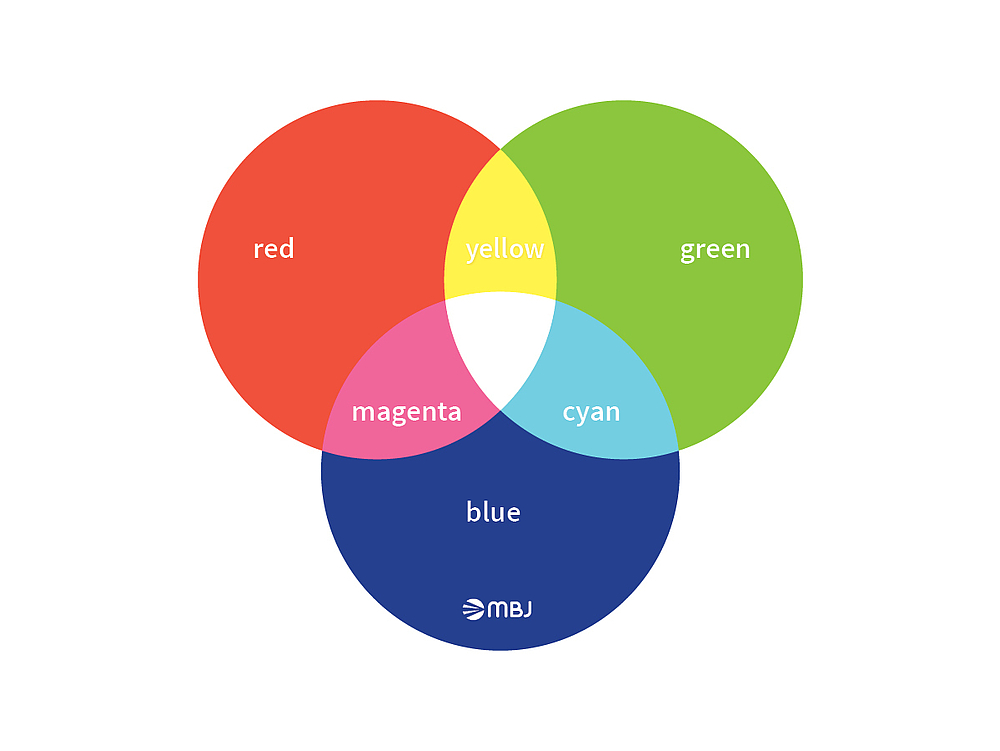
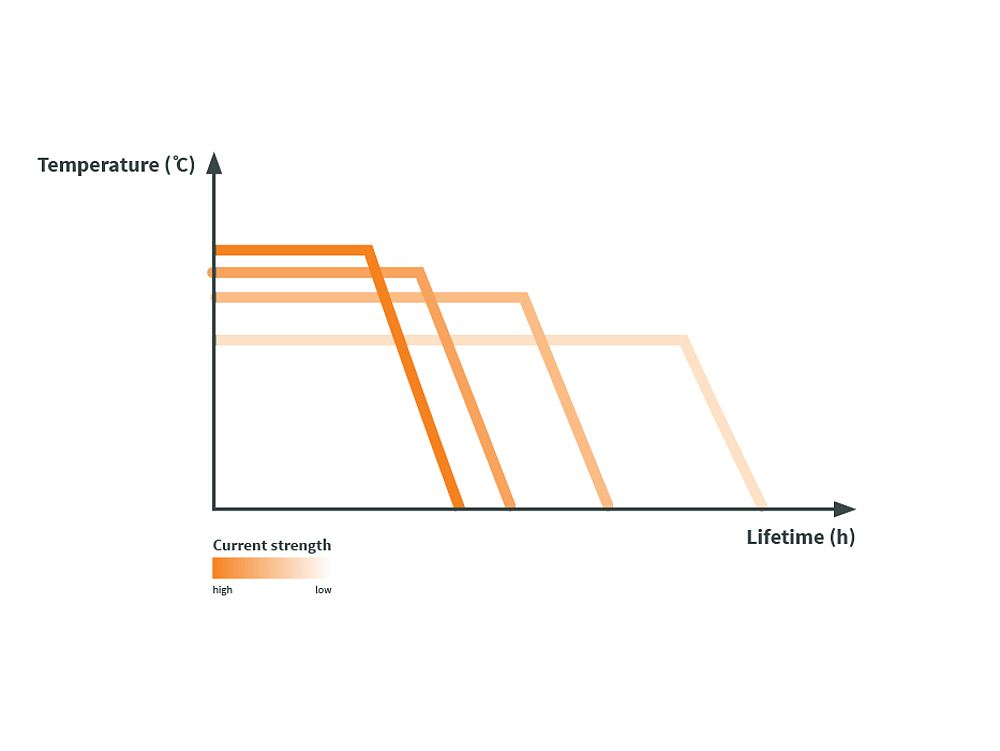
LED Lifetime
The temperature in particular has an influence on the service life of an LED. In an LED, only about 30% of the supplied energy is converted into light, the rest is converted into heat. The ambient temperature also has an influence on the service life of the LED.
The higher the temperature:
- the shorter the total service life
- the lower the luminous efficacy
With an LED, the brightness is determined by the amount of current applied; the higher the current, the higher the LED temperature.
LEDs age gradually, over a long period of time. In most cases, the life expectancy of an LED is given by the operating hours that result in a 70% reduction in initial brightness.
Structure of an LED
An LED is a semiconductor light-emitting diode that is made to emit energy in the form of light by applying current. The diode consists of two oppositely charged layers separated by a barrier layer.
On one side there is a surplus of electrons, on the other a shortage of electrons which appears in the form of "holes" in the crystal structure.
When a forward current is applied to the diode, electrons pass through the junction and into the electron deficient layer, releasing energy in the form of optical radiation (light).
